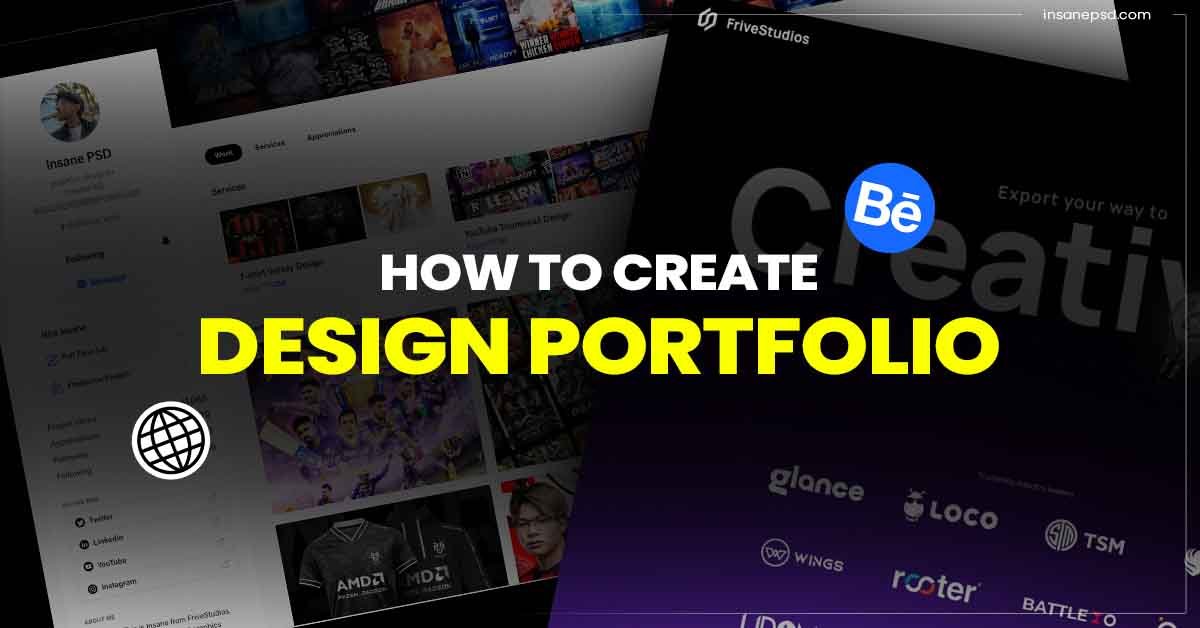Creating a standout portfolio is essential for graphic designers aiming to showcase their skills, attract potential clients, and secure job opportunities. A well-crafted portfolio not only highlights your best work but also demonstrates your design process, creativity, and versatility. This guide provides practical tips for building a compelling graphic design portfolio that captures attention and leaves a lasting impression.
Why a Strong Portfolio Matters
- First Impressions: Your portfolio is often the first interaction potential clients or employers have with your work. A polished portfolio can make a strong first impression.
- Showcase Skills: It highlights your technical skills, creativity, and ability to solve design problems.
- Build Credibility: A comprehensive portfolio builds trust and credibility with potential clients or employers, showcasing your experience and professionalism.
Steps to Create a Standout Portfolio
1. Define Your Purpose and Audience
Before you start assembling your portfolio, determine its purpose and target audience. Are you aiming to attract freelance clients, apply for a full-time job, or showcase your work for educational purposes? Understanding your audience will help you tailor your portfolio to meet their expectations and needs.
2. Select Your Best Work
Quality over quantity is crucial when selecting projects for your portfolio. Choose 8-12 of your strongest pieces that demonstrate a range of skills and styles. Ensure each project highlights:
- Diverse Skill Set: Show a variety of work, including branding, web design, print materials, and illustrations.
- Process and Problem Solving: Include projects that showcase your design process, from initial concepts to final execution.
- Creativity and Originality: Highlight unique and innovative designs that set you apart from other designers.
3. Tell a Story with Each Project
For each project in your portfolio, provide context and narrative. This helps potential clients or employers understand your design process and thought patterns. Include:
- Project Brief: Describe the project’s goals, target audience, and any constraints or challenges.
- Design Process: Explain your approach, including research, brainstorming, and concept development.
- Final Outcome: Showcase the finished product with high-quality images, mockups, and details on how it met the project’s goals.
4. Create a Cohesive Layout
Your portfolio should be visually appealing and easy to navigate. Consider the following when designing your portfolio layout:
- Consistent Theme: Use a consistent color scheme, typography, and layout style throughout your portfolio.
- Easy Navigation: Ensure that visitors can easily browse through your projects. Use clear headings, categories, and a logical flow.
- High-Quality Images: Use high-resolution images and mockups to present your work professionally.
5. Choose the Right Platform
Select a platform that suits your needs and allows for a professional presentation of your work. Popular portfolio platforms for graphic designers include:
- Behance: A community platform where designers can showcase their work and connect with other creatives.
- Dribbble: A platform for sharing small screenshots (shots) of your work and getting feedback from the design community.
- Adobe Portfolio: Offers customizable portfolio sites that integrate with Adobe Creative Cloud.
- Personal Website: Creating a personal website gives you full control over the design and layout, allowing for a unique and branded presentation.
6. Include a Personal Touch
Your portfolio should reflect your personality and design philosophy. Include an “About Me” section with:
- Personal Bio: Share your background, design journey, and what inspires you.
- Professional Experience: Highlight relevant work experience, education, and any notable achievements.
- Contact Information: Make it easy for potential clients or employers to get in touch with you. Include an email address, phone number, and links to your social media profiles.
7. Keep It Updated
Regularly update your portfolio to reflect your latest work and skills. An up-to-date portfolio demonstrates that you are active and continuously improving. Schedule periodic reviews to add new projects and remove outdated ones.
Tips for Making Your Portfolio Stand Out
- Unique Branding: Create a personal brand that reflects your style and personality. Use consistent branding elements across your portfolio and other professional profiles.
- Client Testimonials: Include testimonials from satisfied clients to build credibility and trust.
- Case Studies: Develop detailed case studies for select projects to provide deeper insights into your design process and problem-solving skills.
- Interactive Elements: Incorporate interactive elements such as hover effects, animated transitions, or clickable prototypes to engage visitors.
- SEO Optimization: Optimize your portfolio for search engines by using relevant keywords, meta descriptions, and alt text for images. This increases your visibility online and attracts more visitors.
Conclusion
Creating a standout portfolio is a crucial step for graphic designers aiming to showcase their talent and attract opportunities. By carefully selecting your best work, telling a compelling story for each project, and maintaining a cohesive and professional presentation, you can create a portfolio that impresses potential clients and employers. Remember to keep your portfolio updated, reflect your personal brand, and optimize for search engines to maximize its impact.
Invest time and effort into building your portfolio, and it will become a powerful tool in advancing your graphic design career.
